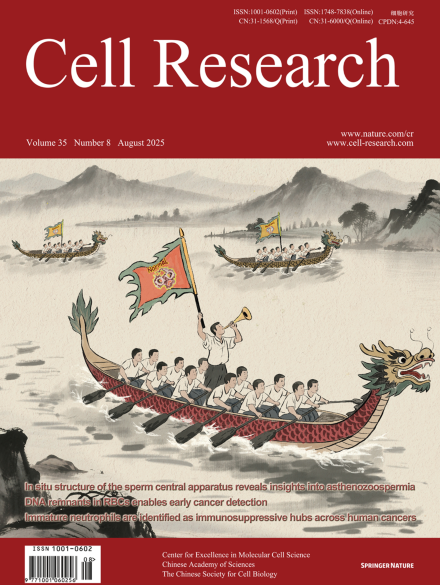 View fulltext
View fulltext
During meiosis, SPO11-catalyzed DNA double-strand breaks (DSBs) initiate homologous recombination, which is essential for accurate chromosome segregation and enhances genome diversification. 28 years after its discovery, three new studies report the reconstitution of SPO11-catalyzed DSB formation in vitro.
Although small nucleolar RNAs(snoRNAs)are well-known for guiding 2′-O-methylation and pseudouridine modification on ribosomal RNAs and small nuclear RNAs, their additional functions have remained largely undefined. Liu and colleagues developed snoKARR-seq to map transcriptome-wide snoRNA targets, and discovered an unexpected role of snoRNA: SNORA73 simultaneously binds to the target mRNA and the 7SL RNA of the signal recognition particle to form ternary interactions that facilitate the secretion of the encoded protein.
Hyper-acute rejection is an immunological reaction elicited against the disaccharide galactose--1,3-galactose following xeno-transplantation of organs into human recipients. In a recent Cell paper, Zhong et al. showed that this reaction can also be used to cause regression of established tumors in latestage cancer patients by expressing the 1,3 galactosyltransferase gene from a novel oncolytic virus.
Parental exposure of Caenorhabditis elegans to pathogens can protect offspring against similar threats, but the bacterial cues and intergenerational signals underlying this response remain poorly understood. A recent study in Cell revealed a novel mechanism of intergenerational protection against natural pathogens, facilitated by the cyanoalanine synthase CYSL-2 and its detoxification intermediate.
In a recent study led by Dr. Hisashi Arase published in Cell, a new mechanism underlying the breakdown of self-tolerance in systemic lupus erythematosus was reported that autoreactive T cells recognize neoself-antigens. Neoself-antigens, encompassing a range of self-molecules, were shown to be presented on major histocompatibility complex class II by non-canonical mechanisms following the downregulation of the invariant chain protein.
In a recent paper published in Immunity, Xu and colleagues demonstrate that enhancing chimeric antigen receptor(CAR)clustering via liquid-liquid phase separation, particularly through the inclusion of CD3, improves immunological synapse(IS)formation, antigen sensitivity, and long-term cytotoxicity. Their optimized CAR design (EB6I28Z) mimics key features of TCR-based IS, reducing exhaustion and improving responses against both hematological and solid tumors.
The central apparatus(CA)within the sperm axoneme is vital for sperm motility, yet its molecular architecture and functional mechanisms remain incompletely understood. Combining cryo-electron tomography and AlphaFold2, we resolved the in-cell structure of mouse sperm CA at a subnanometer resolution and built a near-complete atomic model. Our analysis identified 39 CA-associated proteins, including eight previously unreported components. By presenting the full-length structures of CFAP47 and HYDIN, we elucidate their molecular roles in tethering the C1 and C2 microtubules within the CA. Specifically, HYDIN forms a semicircular chain that encircles C1 and C2, with its N-terminal half driving the C1–C2 connection and its C-terminal half providing axial support in C2. CFAP47, the core structural component of the bridge, binds C1 through its N-terminal domains, interacts with HYDIN via its central CFAP47-ring, and anchors to C2 through its C-terminal region. The significantly reduced sperm motility and impaired CA structure observed in Cfap47-knockout mice confirmed the important role of CFAP47. Furthermore, genetic analysis of infertile Chinese men with asthenozoospermia identified previously unreported mutations in the CFAP47. The CA structural model elucidates the pathogenic mechanisms of these mutations, establishing a direct link between CFAP47 dysfunction and impaired sperm motility. Therefore, our study provides mechanistic insights into CA-related fertility disorders.








